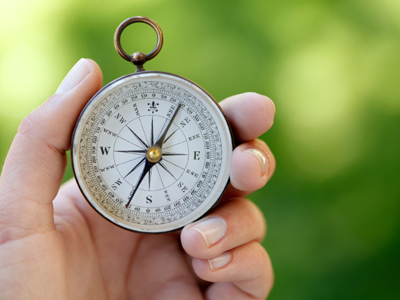
Ask the AI Tutor
Need help with Magnets 01? Ask our AI Tutor!
AI Tutor - Lucy
Connecting with Tutor...
Please wait while we establish connection

A magnetised piece of steel can be used in a compass.
Magnets 01
Magnets in KS3 Science explain forces, attraction, and repulsion. They show how magnetic fields work and why compasses point north using Earth’s magnetic pull.
1 .
If a north and a south pole are near each other ..…..
Nothing will happen
They will attract
They will be demagnetised
They will repel
Opposite poles attract, similar poles repel
2 .
A magnetised piece of steel can be used in .......
A compass
A computer mouse
A remote control
A watch
A compass points to magnetic north and not geographical north, so, when using a compass for navigation, the difference in location between the two poles has to be taken into consideration
3 .
To show the magnetic area around a magnet we use .......
Aluminium powder
Copper filings
Iron filings
Pepper
The other materials are not affected by a magnetic field
4 .
Which of the following metals is NOT magnetic?
Cobalt
Copper
Iron
Nickel
Copper objects will therefore not be attracted to a magnet
5 .
Which one of the following groups of metals are attracted to a magnet?
Copper, nickel, steel
Gold, nickel, iron
Gold, steel, copper
Steel, iron, nickel
Steel contains mainly the element iron
6 .
The ends of a bar magnet are called .......
East and west poles
North and south poles
North poles
South poles
Magnetic force is strongest at the poles
7 .
The area around a magnet is called a .......
Magnetic area
Magnetic field
Magnetic force
Magnetic space
All magnets are entirely surrounded by their magnetic field
8 .
If two north poles are near each other .…...
Nothing will happen
They will attract
They will be demagnetised
They will repel
Maglev (stands for magnetic levitation) trains use this idea to lift them off the ground
9 .
The stronger a magnet .......
The harder the metal
The larger the magnetic force
The smaller the magnetic force
The softer the metal
Magnetic force acts at a distance
10 .
When a magnet is suspended ..…..
It will line up in E-W direction
It will line up in N-S direction
It will not move
It will point up-down
It lines up with the magnetic field of the Earth
**Unlimited Quizzes Await You! 🚀**
Hey there, quiz champ! 🌟 You've already tackled today's free questions.
Ready for more?
Ready for more?
🔓 Unlock UNLIMITED Quizzes and challenge yourself every day. But that's
not all...
not all...
🔥 As a Subscriber you can join our thrilling "Daily Streak" against other
quizzers. Try to win a coveted spot on our Hall of Fame Page.
quizzers. Try to win a coveted spot on our Hall of Fame Page.
Don't miss out! Join us now and keep the fun rolling. 🎉
**Unlimited Quizzes Await You! 🚀**
Hey there, quiz champ! 🌟 You've already tackled today's free questions. Ready for more?
🔓 Unlock UNLIMITED Quizzes and challenge yourself every day. But that's not all...
🔥 As a Subscriber you can join our thrilling "Daily Streak" against other quizzers. Try to win a coveted spot on our Hall of Fame Page.
Don't miss out! Join us now and keep the fun rolling. 🎉






